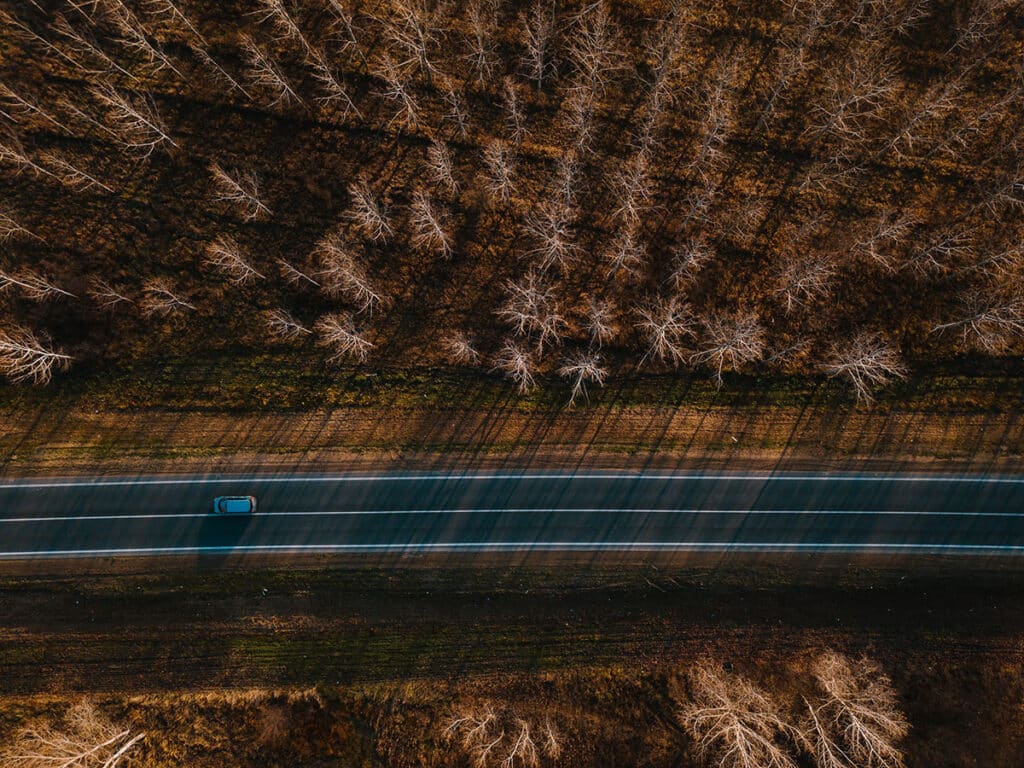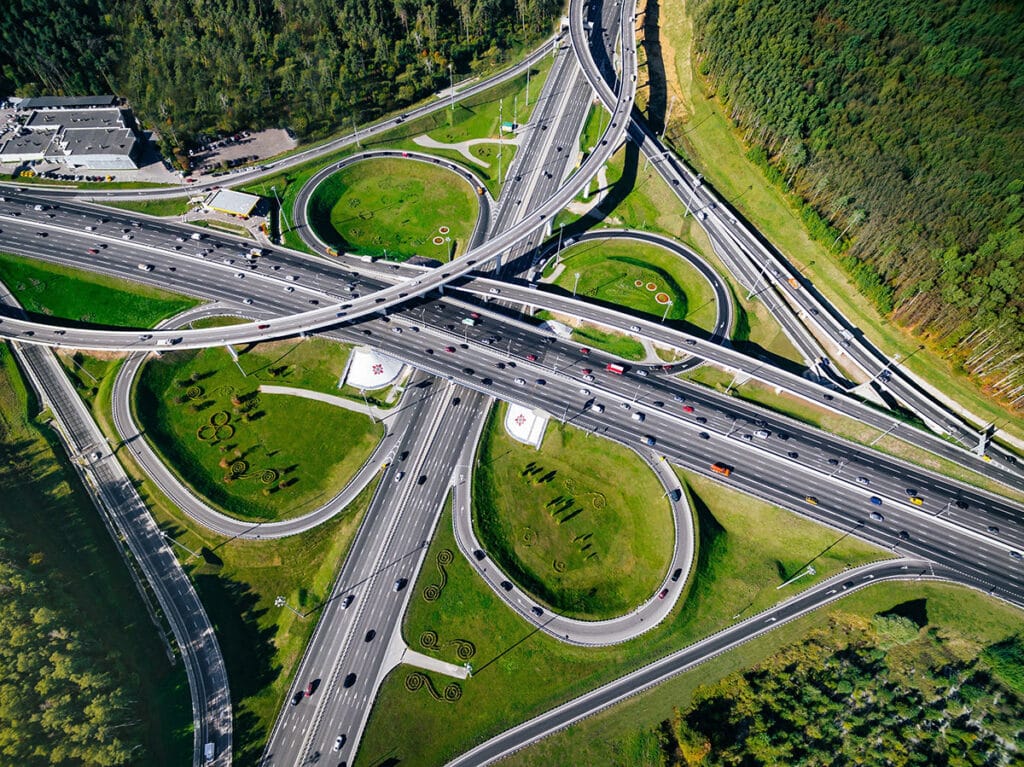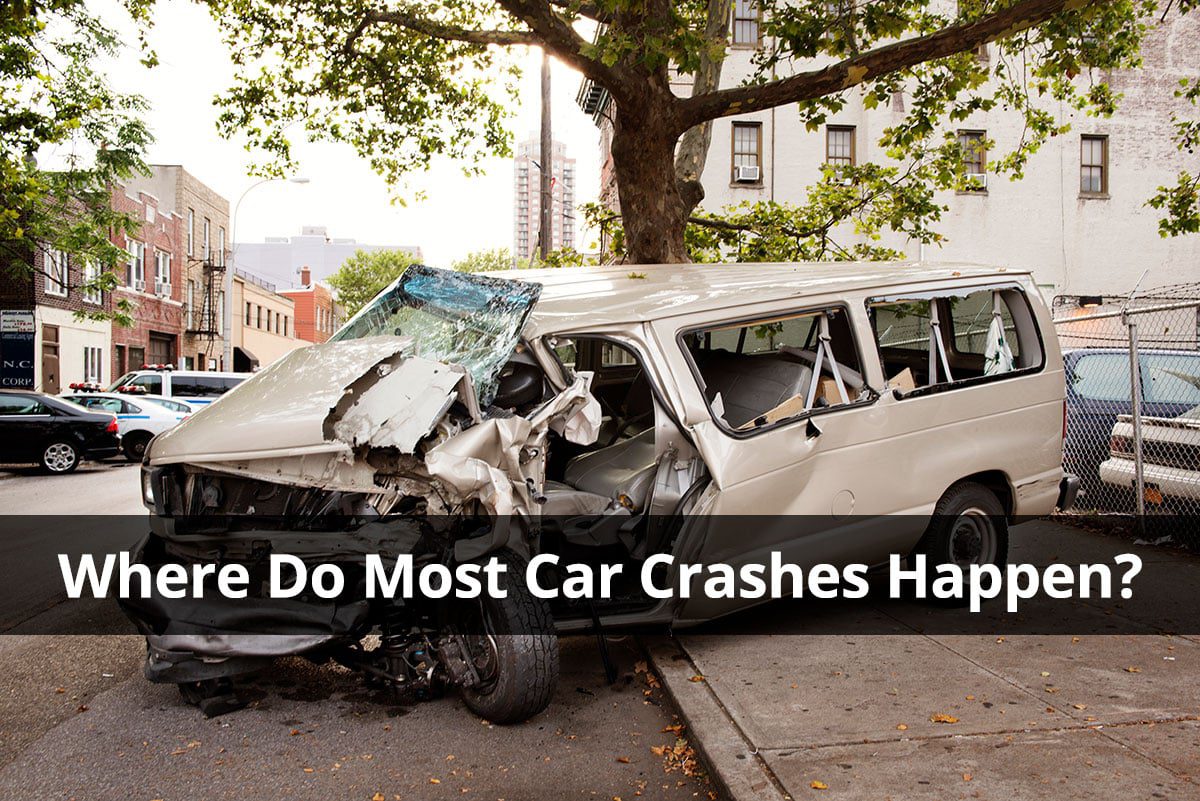Auto accidents are a sad, frustrating, and scary fact of life for just about every driver. Even drivers with clean driving records have been in an accident at some point in their driving experience. That raises a key question:
Where do most car crashes happen?
A car accident can happen anywhere and involve just about anything. Additionally, recent studies suggest that car accidents are happening more frequently. The most common places that experience automobile accidents are rural areas, interstates, intersections, and parking lots. Additionally, most vehicle mishaps happen close to an accident victim’s home.
Here is a summary that answers the question “where do most car accidents happen,” as well as general similarities that exist across almost all vehicular mishaps.
Where Do Most Car Crashes Happen?
The following areas see the most accidents.
Close to Home
According to multiple sources, including the National Highway Traffic Safety Administration (NHTSA,) most car crashes happen within five miles of an accident victim’s home.
Having a car crash near your home makes sense if you think about it. You drive most around where you live, and the more you drive, the more likely you will put yourself in a situation that can result in an accident.Â

Rural Roads
Another place most car accidents happen is on rural roads. That rural areas see more accidents also makes sense. Most rural roads are two-lane, have few barriers to prevent animals from running out on them. Additionally, these roads have poor or nonexistent lighting, and because police are not present, drivers tend to push the envelope regarding speed.
Parking Lots
In many ways, parking lots are free-for-alls that can be described as organized chaos at best. The chaos is particularly bad at busy intersections and during peak traffic periods such as major shopping days during the holidays. The good news is that most parking lot accidents are not serious, although the damage to vehicles can sometimes be extensive.
Intersections
Any intersection has at least two separate pathways for vehicles to maneuver, often coming at each other from the opposite direction. Most intersections have four separate pathways, plus traffic turning in front of oncoming traffic. You would be right in assuming that accidents happen frequently at these junctures since the risk for collision is high.
Stop Signs
These count under the umbrella of intersections, but many deserve their category. Often, people do not see stop signs until they are right in front of them. Other times, the order of right of way can be confusing. Both scenarios are recipes for disaster if someone is not paying enough attention. Additionally, motorists tend to beat red lights, thereby increasing the likelihood of vehicle collisions.
Rush Hour
This statistic is also not surprising when you consider the average highway or secondary roadway during rush hour.
On any given rush hour, a motorist experiences:
- Slower traffic
- Stop and go traffic
- Speeding traffic
- Careless drivers
- Reckless drivers
- Tired drivers
- Stressed drivers
- Vehicles of all shapes, conditions, and capabilities
- Frequent stops and slowing down
- Environmental conditions like sun, rain, snow, ice, etc.
- More vehicles
- Drivers of varying experience
Roadside Shoulders and Construction Zones
Each year, road construction workers and police on detail are struck and, all too often, severely injured or worse. Rear-end accidents frequently happen on road shoulders and in construction zones where the right lane is closed. If a driver is not paying attention, a construction zone can sneak up on a driver and not leave them time to take evasive action.
Accident Statistics
The following are common questions regarding where most car crashes happen and the frequency of accidents.
What Day Do the Most Vehicular Accidents Happen?
Saturdays and Sundays have the most accidents. Fridays from mid-afternoon through early Saturday morning also see a huge number of accidents. People trying to get home for the weekend, those who get moving on weekend travel, and those who are on the way to enjoy a night out on the town are the major influences in most cases.
People also pay less attention from mid-Friday through early Monday morning. If you must drive during the weekend, the safest times are Sunday from 8 a.m. through 11 a.m. However, the most dangerous day of the week to drive is Sunday, followed very closely by Saturday and then Friday. By far, the influencing factor during these times is:
- Drinking
- Fatigue
- Driver inattention
What Day and Month Do Most Car AccidentsHappen?
Most people assume that the winter months or a holiday known for drinking are when most accidents occur. One of the deadliest days with the most accidents, though, is July 4th. It is hard to imagine that drinking is a factor in that statistic since the 4th of July is not known exclusively for drinking.
Others include Memorial Day Weekend and Thanksgiving.
Most Serious Accidents Happen at What Time of the Day?
Most accidents happen between 1 p.m. and 7 p.m.
That likely is due to the following factors:
- People in a hurry to get home
- Drinking
- Fatigue that starts in the afternoon
- Driver distractions (picking up kids, hurrying home, higher volume traffic, etc.)
What Time of the Year Do Most Vehicular Accidents Happen?
Summer is by far the time of year that most accidents happen. There are multiple reasons for this. Some include, but are not limited to:
- More vehicles on the road
- Distracted and hurried driving
- Drinking
- Vacationers not paying full attention
Where Do the Most Car Accidents Happen in the World?
Libya has 73.4 car accidents per 100,000 people. Outside of that statistic, lower and middle-income countries have less than half the world’s vehicles but account for over 90 percent of traffic fatalities due to accidents.
There are several reasons for lower or middle-income countries having high traffic accidents and traffic fatalities:
- Poor road conditions
- Unsafe vehicles
- Little to no traffic laws or enforcement outside of cities
- Public transportation with little or no safety measures
- Few emergency services and dysfunctional or nonexistent emergency facilities
Do Most Car Accidents Happen Close to Home?
While a report maintains that most accidents happen closer to home, it is decades old. It stands to reason, however, that the data are still relevant and is still a reasonable assumption that accidents more likely happen close to home.
Familiarity
We tend to take risks when we are familiar with a setting. That holds with just about every aspect of life. You are far more likely to get into a vehicle of someone you know, for example, than to jump into a vehicle of a total stranger.
Likewise, if you know your way home, you are far more likely to take chances driving than driving somewhere unfamiliar.
Younger Drivers
Drivers with less experience will generally venture closer to home than further away. Younger drivers contribute to a significant number of both nonfatal and fatal auto accidents.
In addition, restrictions tend to mean younger drivers will operate motor vehicles closer to home, such as:
- Laws governing who they can drive with
- Regulations on where and when they can drive
- Driver prohibitions that mandate younger drivers be close to home (miles restrictions, etc.)
Each has the default effect of keeping younger drivers close to home. Because they make up a disproportionate number of traffic accidents, those will happen closer to home.
Driving Caution
When you travel via car far from home, you tend to follow safety laws more diligently.
For many, the fear of being ticketed is enough to make them slow down, drive with more caution and take extra measures to be safe when they are far away from home than if they are right around the corner.
The great equalizer with this tendency is distracted driving.
Drivers tend to be just as careless with texting, talking on the phone, eating while driving, etc., far away from home as they do close to home.Â

Where Do Most Fatal Car Accidents Occur?
Many people would guess that fatal accidents happen in more populated areas, probably at intersections, but most fatal accidents happen in rural areas on fairly straight stretches of road. Those accidents are due to speed and driver distraction.
Drivers tend to go too fast on rural roads, with more than the usual potential dangers such as deer crossings.
When Do Most Car Accidents Happen? Day or Night?
Fatal car accidents happen most frequently at night.
That stands to reason, given lower visibility and the likelihood that drivers have impaired focus during these periods. Nonfatal accidents happen more often late in the afternoon during the drive home. That also makes sense, given that people are hurrying to get home and traffic volume is greater than normal.
What to Do When Involved in a Vehicular Accident
There’s bound to be a time when you’re an injured party in a car accident. Once you’re able to contact the police, get the contact details of the other party as well as witnesses, and then contact a personal injury lawyer to help you.
Final Thoughts
So, now you know where most car crashes happen.
Traffic accidents are a fact of life for most drivers. By using common sense, you can avoid or at least reduce the chances of being involved in one. If you pattern your driving habits to these facts, you can drive with more awareness and hopefully avoid becoming part of the statistics.
When the inevitable happens, however, contact a car accident attorney as soon as possible to assess the best course of action moving forward.














